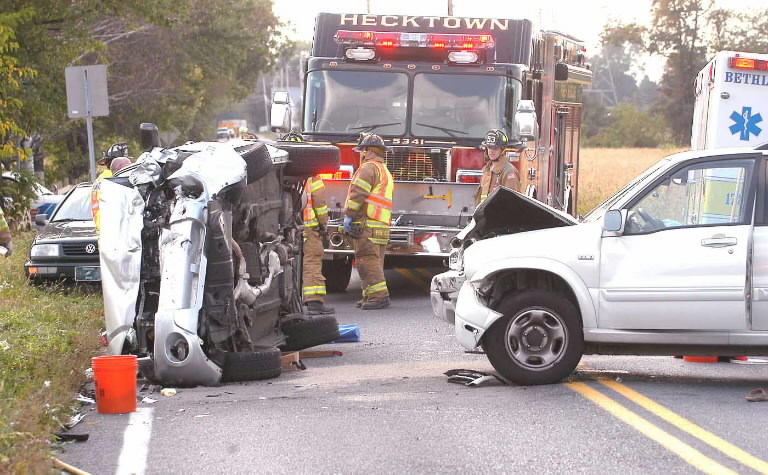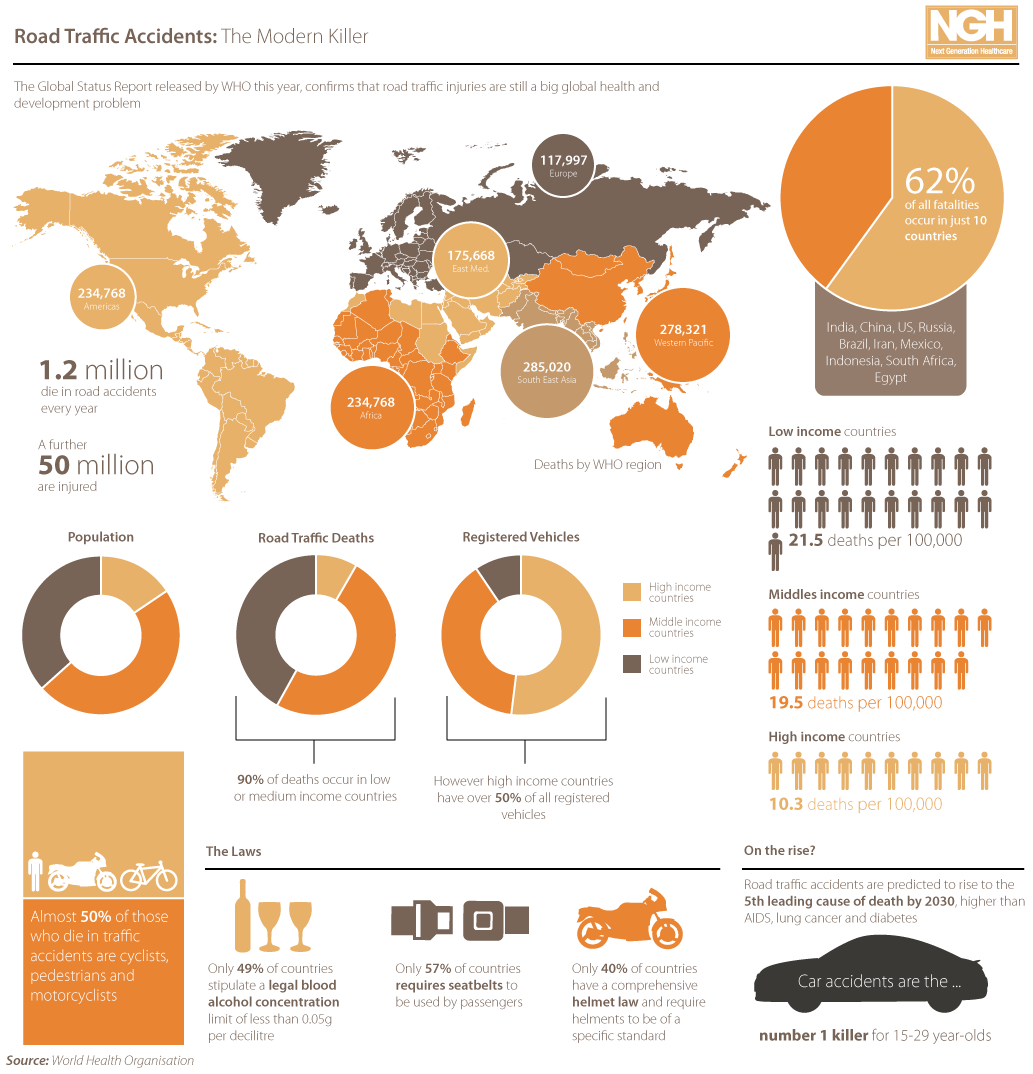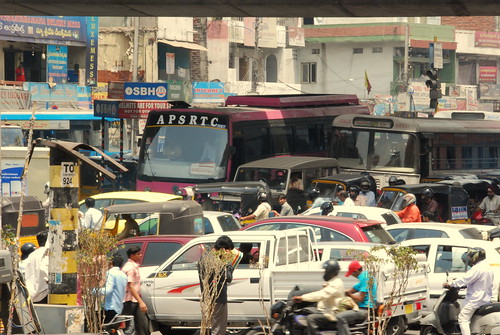American road traffic fatalities fall to record low since 1950s; Alarming Numbers of Road Traffic Deaths Around The World Remains A Concern
(Sources: Next Generation HealthCare via Good; Infrastructurist)
Incidents like 9-11 bring to people’s mind the dangers of man made disasters, and the enormity of the problem gets magnified with the loss of lives resulting from such incidents. But how many of us realize that here in the US we lose many more lives on our nation’s roads every year due to automobile accidents? If you have not grasped the enormity of the problem we are facing in our roads, it the rough equivalent of 12 times the losses we suffered in that one incident — that would be roughly 34,000 lives were lost in the US roads in 2009 alone, according to a new report released by NHTSA. In the decades past the problem was even worse and the transportation agencies at all levels – Federal, State and Local have been actively engaged in combating this problem. The silver lining in this grey cloud is that the numbers are dropping steadily in the past the years, at least in the US. Thanks in large part to the continued efforts of the governments in making our roads safer and also to the auto manufacturers who have made the vehicles stronger and smarter, we can now continue to see a reduction in the years ahead. Here are some interesting numbers from this NHTSA estimates:
- A decline in highway deaths of 8.9% from 2008 to 2009
- The lowest fatality rate–1.16 deaths for every 100 million vehicle miles traveled–on record
- The lowest overall number of deaths–33,963–since 1954
- 15 straight quarters of decline in the number of overall roadway deaths
Unfortunately, the same cannot be said about the rest of the world. Pretty much every country on this blue planet has been a victim of this problem and many of them counter massive, tragic losses every year that have only continued to climb up. The losses are steeper in many of the developing countries and under-developed countries, where the poor infrastructure and lack of enforcement & driver education are compounding the problems. Especially in countries like China and India, where the growing economies have fueled a significant spike in the number of vehicles on road, the governments are struggling to keep pace with the surging demand for roads and other surface transportation infrastructure. The graphical depiction below, courtesy of Next Generation Healthcare, clearly demonstrates the enormous problem we are facing around the world. It shows how many deaths there are from road traffic accidents in different parts of the world and the numbers are alarming.
Quoting the numbers from the NHTSA estimate for 2009 motor vehicle traffic fatalities, Ray LaHood – the Secretary of the US Department of Transportation, noted on his blog that he is extremely encouraged by the significant drop in fatalities on American roads but at the same time he is disturbed by the fact that “we are still talking about nearly 34,000 preventable deaths a year. There are still too many people dying in traffic accidents every year. Just too many.”
On 2 March 2010 governments around the world took the historic decision to increase action to address the road safety crisis over the next ten years. The UN General Assembly resolution proclaiming a Decade of Action for Road Safety 2011-2020 (A/64/L.44/Rev.1) was tabled by the Government of the Russian Federation and cosponsored by more than 90 countries. WHO welcomes this proclamation which seeks to save lives by halting the increasing trends in road traffic deaths and injuries world-wide. A draft Plan for the Decade, which was prepared by WHO with support from members of the UN Road Safety Collaboration, is now open to all stakeholders for comments. Visit the Collaboration’s web site at http://www.who.int/roadsafety.
Some nuggets of information for you that will make you gasp (courtesy of World Health Organization’s report on road safety titled The Decade of Action for Road Safety 2011-2020):
- Over 3000 people die on the world’s roads every day.
- Tens of millions of people are injured or disabled every year. Nearly 1.3 million people are killed each year. If trends continue unabated deaths will rise to an estimated 2.4 million a year by 2030.
- Between 20 and 30 million sustain non-fatal injuries.
- It’s predicted that by 2030, the amount of people who are killed in road traffic accidents will rise to fifth in the leading causes of death around the world. Currently it is in ninth place.
Hopefully, with improved funding and targeted attention towards issues like distracted driving and drunk driving, we can expect a decrease in this trend. Oh if are wondering how you personally contribute towardsaddressing the problem — Leave your keys behind and take transit systems (buses, trains, etc) if you can. If you have the proper infrastructure, you can consider walking or biking to places instead of driving. Next time when you drive your car/ motorcycle/bicycle , remember that you are not just driving for your own safety but also also for those of others who share that road with you. At the end of the day, there is only so much the goverments can do to keep is safe and we the citizens have to realize that they have a very important and personal role to play in keeping our roads safe. Let’s do it!
Related articles by Zemanta
- Exclusive: Driving Fatalities Fall to Record Lows, According to Report (abcnews.go.com)
- U.S. Traffic Fatalities Hit Historic Lows (thecarconnection.com)
- Highway deaths hit lowest level since ’50s (msnbc.msn.com)
- U.S. Plans New Car-Safety Rules (online.wsj.com)
- Driving deaths plunge, fewest since 1954 (money.cnn.com)
- Highway deaths drop to lowest levels since 1950s (seattletimes.nwsource.com)



![Reblog this post [with Zemanta]](http://img.zemanta.com/reblog_e.png?x-id=55aaa725-f2ea-4180-a942-30a3743e2cd9)

